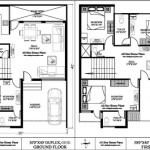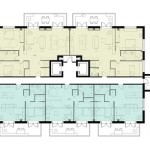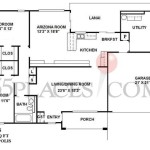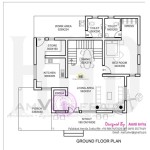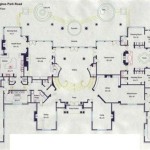Colonial House Plans with Inlaw Apartment: A Practical and Appealing Option
Colonial house plans, characterized by their symmetrical facades, classic detailing, and functional layouts, remain a popular choice for homeowners. However, modern living often demands flexibility and the ability to accommodate multi-generational households or provide rental income. This is where colonial house plans with inlaw apartments offer a compelling solution, seamlessly blending traditional aesthetics with contemporary practicality.
An inlaw apartment, also often referred to as an accessory dwelling unit (ADU), provides a self-contained living space within or attached to the main house. This space typically includes a bedroom, bathroom, living area, and kitchen, allowing for independent living while maintaining proximity to family. Colonial house plans that incorporate these apartments require careful planning to maintain the architectural integrity of the colonial style while ensuring privacy and accessibility for both the main residence and the apartment.
Designing colonial house plans with inlaw apartments involves navigating zoning regulations, considering structural requirements, and prioritizing the needs of all occupants. This article will explore the key considerations and benefits of this type of home design.
Benefits of Colonial House Plans with Inlaw Apartments
Colonial house plans featuring inlaw apartments offer several distinct advantages, making them attractive to a diverse range of homeowners. These benefits extend beyond mere convenience, impacting family dynamics, financial stability, and property value.
The primary advantage is the enhanced ability to accommodate multi-generational living. Aging parents can maintain their independence while residing close to their children and grandchildren, fostering a supportive environment and alleviating concerns about distance. This arrangement can also provide valuable caregiving support, reducing the financial and emotional burden of external care facilities. Similarly, young adult children returning home after college or while saving for their own residence can benefit from the privacy and autonomy of an inlaw apartment, facilitating a smoother transition.
Beyond family considerations, inlaw apartments offer significant financial advantages. The apartment can be rented out to tenants, generating a consistent stream of income that can help offset mortgage payments, property taxes, or other household expenses. This rental income can provide financial security and flexibility, particularly during periods of economic uncertainty. Furthermore, the presence of an inlaw apartment can also increase the overall property value, making it a worthwhile investment in the long run.
Finally, inlaw apartments can provide a sense of community and connection. While offering independent living spaces, they also facilitate interaction and shared experiences. This can be particularly beneficial for individuals who value social interaction and a sense of belonging. The proximity of family or renters can create a vibrant and supportive living environment.
Key Design Considerations for Colonial House Plans with Inlaw Apartments
Integrating an inlaw apartment into a colonial house plan requires careful planning and attention to detail. Several key design considerations must be addressed to ensure a functional, aesthetically pleasing, and compliant space.
A crucial aspect is ensuring separate and convenient access to the inlaw apartment. This access should ideally be independent of the main house entry, providing privacy and autonomy for the occupants. Options include a separate exterior door, a private entrance through a garage, or a dedicated walkway leading to the apartment entrance. The placement of this entrance should be carefully considered to maintain the aesthetic balance and symmetry characteristic of colonial architecture.
Zoning regulations play a significant role in determining the feasibility and design of an inlaw apartment. Many municipalities have specific requirements regarding size restrictions, occupancy limits, parking provisions, and separation of utilities. It is imperative to research and comply with all local zoning ordinances before beginning the design process. Some areas may require special permits or variances for the construction of an ADU.
Privacy is paramount in designing an inlaw apartment. Soundproofing measures should be implemented to minimize noise transmission between the main house and the apartment. This can be achieved through the use of insulation, double-paned windows, and strategically placed walls and doors. The layout of the apartment should also be carefully considered to ensure that windows and living spaces are positioned to maximize privacy for both the occupants of the main house and the apartment.
Furthermore, ensuring accessibility for all occupants is essential. If the inlaw apartment is intended for an elderly or disabled individual, features such as ramps, grab bars, wider doorways, and accessible bathrooms should be incorporated into the design. These features not only enhance accessibility but also contribute to the overall safety and comfort of the living space.
Integrating the Inlaw Apartment While Maintaining Colonial Aesthetics
One of the primary challenges in designing colonial house plans with inlaw apartments is seamlessly integrating the addition while preserving the architectural integrity of the colonial style. This requires careful attention to detail and a thoughtful approach to design.
Maintaining symmetry, a defining characteristic of colonial architecture, is crucial. When adding an inlaw apartment, the design should strive to maintain a balanced and symmetrical facade. This can be achieved by incorporating the addition into the existing structure in a way that complements the original design, rather than appearing as an afterthought. The use of similar materials, architectural details, and window styles is essential for creating a cohesive and harmonious aesthetic.
Rooflines play a significant role in the overall appearance of a colonial house. When adding an inlaw apartment, the roofline should be carefully considered to ensure that it blends seamlessly with the existing roof. Options include extending the existing roof, creating a separate gable roof that complements the main house, or incorporating a dormer to integrate the addition into the overall roofscape. The goal is to create a unified and visually appealing roofline that maintains the character of the colonial style.
Exterior cladding and detailing should also be consistent with the colonial style. Common cladding materials for colonial houses include clapboard siding, brick, and stone. When adding an inlaw apartment, the cladding should match the existing siding of the main house. Architectural details such as window trim, door surrounds, and cornices should also be replicated to create a cohesive and unified appearance. The use of historically accurate colors and finishes can further enhance the authenticity of the colonial style.
Landscaping can also be used to integrate the inlaw apartment into the overall property. Planting trees, shrubs, and flowers around the addition can help to soften the lines and create a sense of privacy. The landscaping should be consistent with the colonial style, featuring elements such as symmetrical plantings, formal gardens, and brick walkways. A well-designed landscape can enhance the curb appeal of the property and create a welcoming environment for both the occupants of the main house and the inlaw apartment.
In conclusion, designing colonial house plans with inlaw apartments presents a unique opportunity to combine traditional aesthetics with modern functionality. By carefully considering zoning regulations, privacy concerns, accessibility requirements, and the architectural integrity of the colonial style, homeowners can create a versatile and valuable living space that meets the needs of a multi-generational family or provides a source of rental income.

House Plans With In Law Suite Floor Designs

Colonial In Law Suite Home With 4 Bedrms 2747 Sq Ft Plan 110 1110

Southern Style House Plan With In Law Suite
Colonial In Law Suite House Plans Home Design Hw 3506 18318
:max_bytes(150000):strip_icc()/bellewood-cottage-2c59d5ea867a4fe196ff5a9ad12c6812.jpg?strip=all)
House Plans With Mother In Law Suites
:max_bytes(150000):strip_icc()/deep-river-farmhouse-a9b50b7623b6405587bff9d790b4dd40.jpg?strip=all)
House Plans With Mother In Law Suites

Stunning Home Plans With Mother In Law Suites

House Plans With In Law Suites Attached Guest Houses The Designers

House Plan 92374 Colonial Style With 2097 Sq Ft 4 Bed 3 Bath

House Plans With In Law Suite Floor Designs

